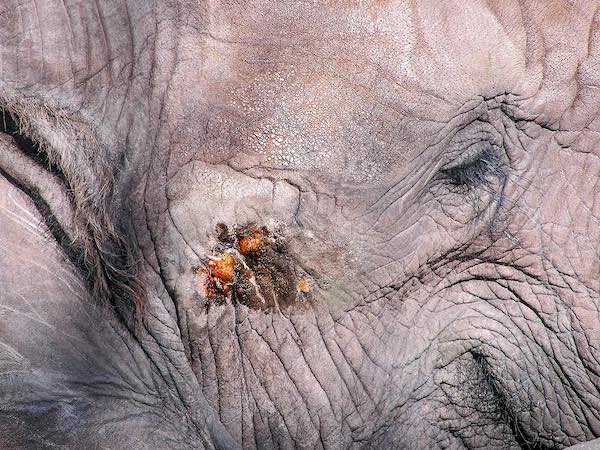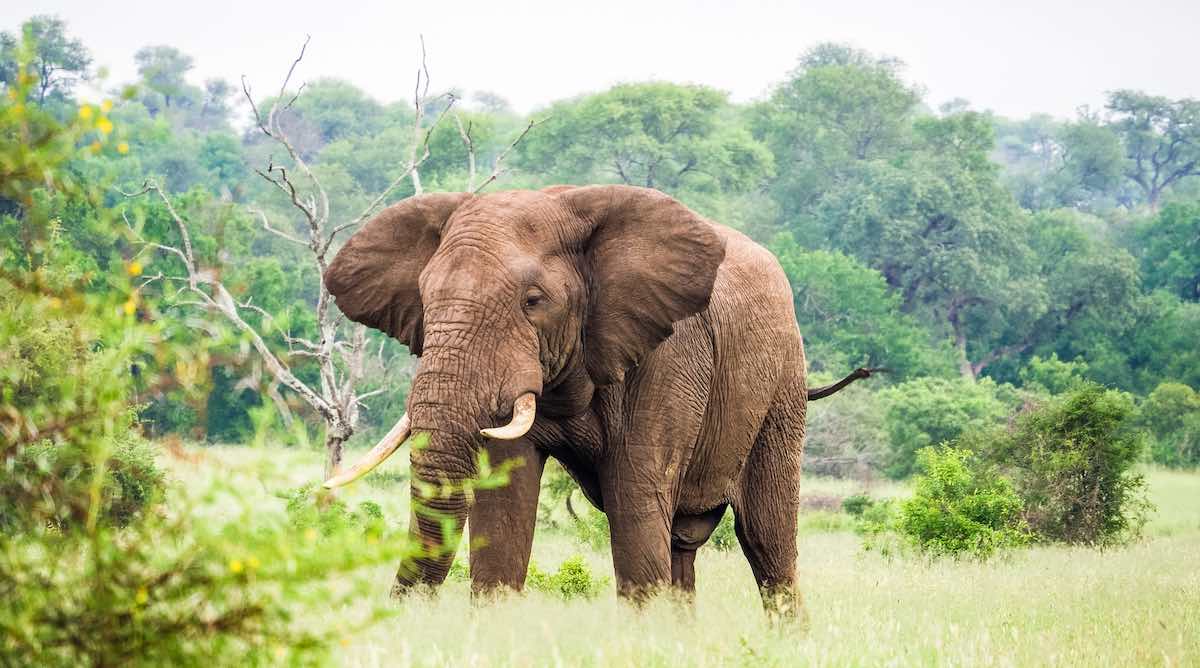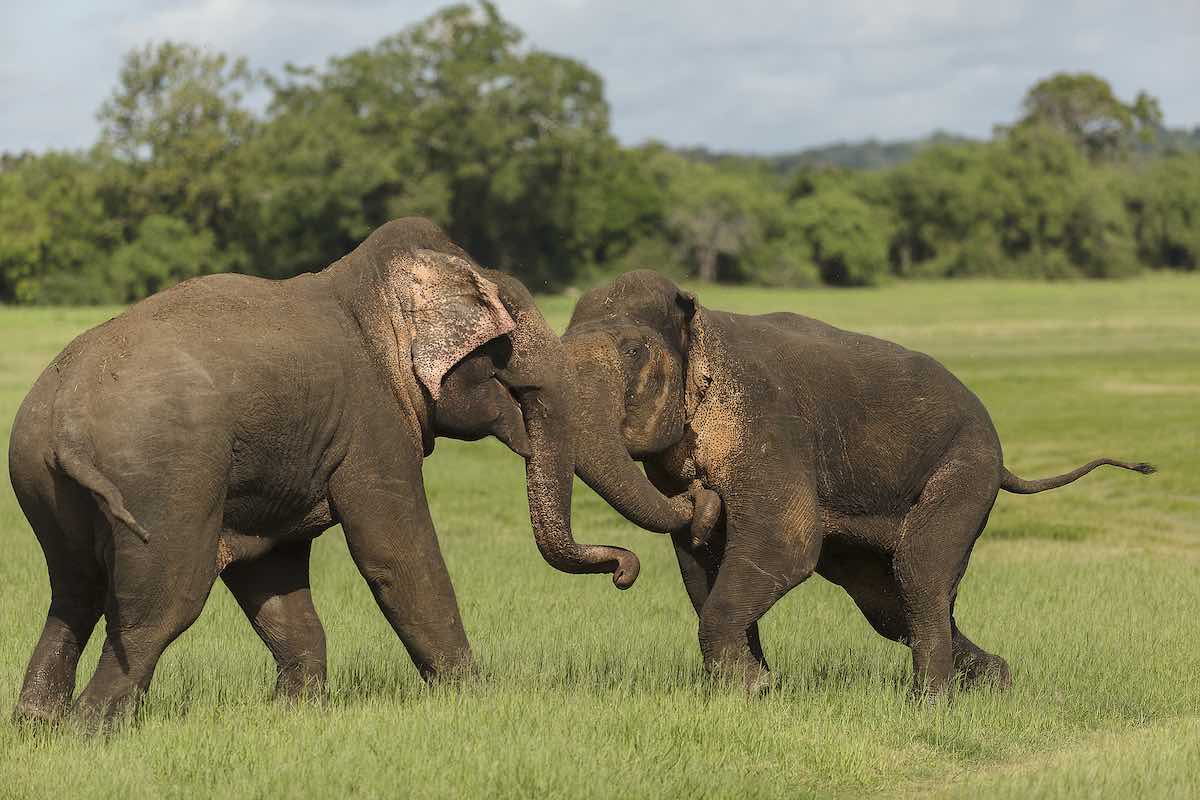Elephant musth – a natural, yet extraordinary phenomenon that showcases nature’s raw intricacy. Musth triggers significant hormonal, physiological, and behavioral changes in adult male elephants, influencing everything from individual temperaments to social hierarchies within herds.
Understanding musth, however, extends beyond mere academic curiosity. It is crucial for managing human-elephant coexistence and driving effective conservation efforts.
As such, demystifying the complexity of musth, debunking common myths, and shedding light on this unique aspect of elephant life forms an essential part of our exploration.
Whether you’re an aspiring conservationist, wildlife enthusiast, or simply intrigued by these magnificent creatures, this exploration offers valuable insights into understanding elephants and their intriguing world.
Understanding Elephant Musth: Introduction
Embark on an enlightening journey as we peel back the layers of the intriguing aspect of elephant biology – Elephant Musth.
What is Elephant Musth?
In the world of adult male elephants, there’s a phenomenon that transforms them entirely. It’s known as Elephant Musth. This transformation occurs in both African and Asian species.
Musth is not merely a phase but a dramatic physiological change. It’s marked by a surge in reproductive hormones – imagine testosterone levels skyrocketing to 60 times their usual levels. That’s musth for you.
But it’s not just about hormones. Musth also brings about visible physical changes. Elephants start secreting a dark, viscous fluid from their temporal glands. They urinate frequently, almost constantly.

Why does Musth occur in Elephants?
Elephant Musth isn’t random; it serves a significant purpose in an elephant’s life, particularly concerning reproduction and social interactions.
When male elephants come of age sexually, they enter this phase of musth. It’s almost as if a switch has been flipped, making them more attractive to females and more formidable to other males.
However, elephant musth isn’t fully understood yet. We know it’s a mix of factors – environmental, physiological, and social – that triggers musth. But there’s still much to uncover about this complex biological event.
Elephant Musth Facts
Despite the image of increased aggression and turmoil, elephant musth is a normal and vital part of their lifecycle.
Here are some captivating facts:
- Musth lasts for days to typically between 2-3 months and occurs in three stages; pre-musth, peak musth, and a post-musth condition.
- Typically, it’s an annual event, but the frequency may vary.
- Not every male elephant experiences musth. Some may never undergo this phase.
- Handling elephants in musth is challenging, especially in captivity, due to their enhanced aggression.
In the upcoming sections, we will dive deeper into the physiological changes during musth, the behavioural impact on elephants, and the significant role elephant musth plays in human-elephant interactions and conservation efforts.

The Physiological Changes during Musth
As we delve deeper into elephant musth, let’s examine the significant physiological changes that occur during this period – from hormone surges to visible physical transformations.
Hormonal Shifts in Musth
Elephant musth is akin to a hormonal storm. The most remarkable shift occurs with testosterone levels, which can skyrocket to an astonishing 60 times their normal rate. But testosterone isn’t the only hormone at play. Elephants also experience an increase in other hormones and pheromones that can influence behavior and physical changes.
During musth, there’s a clear spike in aggressiveness and sexual activity, signaling the elephant’s readiness to mate. It’s a fascinating, intricate dance of hormones that still holds many secrets for scientists to uncover.
Physical Changes in Elephants during Musth
The physiological effects of elephant musth aren’t just internal; they manifest externally too. One of the most notable signs is the secretion of a pungent, dark fluid from the temporal glands located on the sides of the elephant’s head.
Simultaneously, male elephants in musth start to urinate more frequently. But it’s not ordinary urination. They often release a slow trickle that leaves a trail wherever they move.
This continuous urine dribbling, combined with the gland secretion, produces a strong, distinctive smell that can be detected by other elephants from a considerable distance.
Differences in Musth Between African Elephants and Asian Elephants
While musth occurs in both African and Asian male elephants, there are slight differences between the two. The onset of musth tends to start earlier in Asian elephants, sometimes even in males as young as 15 years old. In contrast, African elephants generally start experiencing musth at around 25 years old.
Furthermore, the duration and intensity of musth can also vary between the two species. These variations could be attributed to differences in their habitats, diets, and genetic makeup.
In the next section, we’ll take a look at the behavioral impact of musth on elephants and the ripple effects it has on their social dynamics.
The Behavioral Impact of Musth on Elephants
Beyond the physiological changes, elephant musth brings about profound behavioral shifts.
In this section, we’ll explore how musth shapes aggression, dominance, social hierarchies, and mating behavior among elephants.

Aggression and Dominance: The Behavioral Shifts
Musth has a dramatic influence on a male elephant’s demeanor. Typically gentle and sociable creatures, males in musth display heightened levels of aggression.
The surge of testosterone seems to infuse them with increased energy and a propensity to confront other elephants, humans, or even inanimate objects.
This dominance displayed is not aimless. It plays a crucial role in their quest for mating privileges. By showcasing their power, male elephants in musth establish their place in the dominance hierarchy, which in turn influences their mating success.
The Impact of Musth on Social Hierarchies in Elephant Herds
Elephant societies are intricate, with herds often dominated by older, experienced females. However, musth brings about a temporary shift in this order.
When a male elephant enters musth, he becomes the most dominant individual in the vicinity, towering over the usual matriarchal structure.
This ‘musth dominance’ enables even younger males to challenge older, non-musth males, temporarily altering the social fabric of the herd. However, once musth subsides, the usual matriarchal hierarchy is reinstated.
Impact on Mating Behavior
Musth has significant implications for an elephant’s mating behavior. Male elephants in musth are more likely to attract potential mates due to their heightened levels of testosterone and the strong odors they emit.
These musth males are often more sexually active and will pursue females more aggressively. They’re also more likely to engage in conflicts with other males to secure mating privileges.
In the subsequent sections, we’ll investigate how elephant musth impacts human-elephant interactions and its influence on conservation efforts. Stay tuned as we delve further into the compelling world of elephants.
Conservation Perspectives
Dive into the world of conservation as we examine how the unique phenomenon of elephant musth impacts elephant populations and poses challenges to conservation efforts.

The Effect of Musth on Elephant Populations
The cycle of musth plays a crucial role in the natural regulation of elephant populations. Since musth increases an elephant’s sexual activity and aggression, it typically leads to more successful mating.
This can contribute to a healthy growth rate in elephant populations, essential for species threatened by habitat loss and poaching.
However, musth can also have negative impacts on populations. Males in musth can inflict serious injuries or even kill rival males in fights over mating rights.
This heightened aggression can disrupt herd structures and potentially impact the overall population stability.
Musth-Related Deaths: Poaching, Conflicts, and Conservation Challenges
The altered behavior and strong scent trail that a musth elephant leaves can unfortunately make them easier targets for poachers.
In regions where ivory hunting is a problem, musth males are particularly at risk due to their larger tusks and predictable movement patterns.
Similarly, male elephants in musth are more likely to venture into human-populated areas in search of mates, leading to an increased risk of human-elephant conflict.
These conflicts often result in the death of the elephant, contributing to their declining numbers.
Managing elephants in musth, especially in captivity or in closely monitored wild populations, presents a unique set of challenges for conservationists.
Their heightened aggression can lead to injuries among keepers and other elephants, necessitating special handling and care.
Debunking Elephant Musth Myths
Let’s address some of the myths surrounding elephant musth and clarify misunderstandings, helping to paint a more accurate picture of this natural phenomenon.
Musth and Madness: Separating Fact from Fiction
There’s a widely held belief that musth is a state of madness or ‘temporary insanity’ in elephants. This perception, however, is misleading.
Yes, elephants in musth display increased aggression and can be unpredictable, but this behavior is a natural and essential aspect of their reproductive strategy.
Musth is not a disease or a mental disorder; rather, it’s a phase of heightened sexual activity and competition.
Addressing Common Misunderstandings about Elephant Musth
Another common misunderstanding is that all male elephants experience musth, when in reality, some never do. Musth is also not solely a feature of old age.
Younger elephants can enter musth, although their musth periods tend to be shorter and less intense.
The duration of musth can vary greatly from one elephant to another, and it’s not always connected to the elephant’s size, strength, or age. Understanding these nuances is key to comprehending the complex nature of elephant musth.
Frequently Asked Questions about Elephant Musth
Elephant musth is a periodic condition in bull (male) elephants, characterized by a surge in reproductive hormones like testosterone, leading to significant behavioral and physical changes. It’s a natural aspect of an elephant’s life associated with mating and dominance behaviors.
No, not all male elephants experience musth. While it’s a common occurrence in mature males, some elephants may never enter musth. The duration and intensity of musth can also vary widely among individuals.
Physical signs of musth include swelling in the temporal area, secretion of a fluid called temporin from the temporal glands, and dribbling urine. Behaviorally, musth elephants display heightened aggression, increased sexual activity, and dominant behavior.
Musth can complicate elephant conservation efforts due to the increased aggression and risk of human-elephant conflicts during this period. Understanding musth and its implications is vital for effective management strategies in areas of human-elephant coexistence.
In Summary
Elephant musth, a unique natural condition, induces significant changes in male elephants, from hormonal shifts to behavioral transformations.
This crucial phenomenon not only shapes social dynamics within herds but also poses challenges for human-elephant coexistence and conservation due to its heightened aggression and risk of conflict.
Contrary to common myths, musth isn’t a state of madness, nor does it affect all male elephants. Recognizing musth as a natural and intense phase in an elephant’s life is key to accurate understanding and effective management.
In essence, a thorough comprehension of elephant musth is pivotal for conservationists, aiding them in ensuring the survival and well-being of these magnificent creatures.
As we deepen our understanding of musth, we foster a future where elephants can coexist harmoniously with their environment and humanity.

One reply on “Unveiling the Mystery of Elephant Musth: A Comprehensive Guide”
Hi John- I’m a travel agent in Washington DC for many years with a passion for elephants. I follow Sheldrick Wildlife Trust- Samburu Herds-Super Tuskers- Elephant Voices- HERD in South Africa. Cannot respect any creature more than elephants. I’ll be at Elephant Watch Camp in June, Loisaba and Masai Mara North + A Sheldrick visit! I’d love to ask you a question.